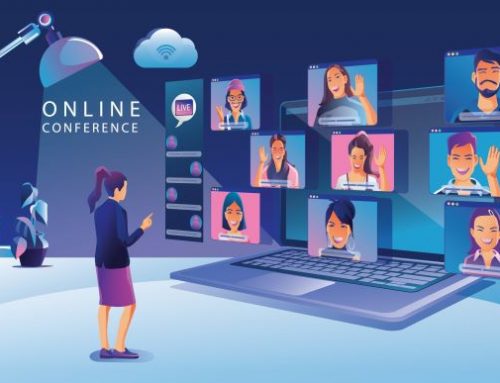HelloFresh sends me a message at the top of my Inbox twice a month with the subject line: “Hooray! You were paid today, Simon.”
It’s a basic product function, but it makes me smile nonetheless. The HR app is commemorating what is typically a minor day for businesses but a major day in workers’ lives.
HelloFresh recognises that happy workers lead to happy businesses (HelloFresh’s customers). They can create interactions that please time and time again by going the extra mile, which is a core value of their brand. Customer centricity is understood by brands who go out of their way to satisfy their customers with any interaction, from in-app copy to email drips and phone calls.
And today, being acutely aware of service is more important than ever. According to KPMG, 88% of CEOs are concerned about customer loyalty, realising that mastery of the customer agenda is essential.
So, as a leader, how do you create and sustain a company that prioritises customer service and fosters a customer-centric mindset at all times? By incorporating customer-centricity into the company’s DNA!
What does Customer-Centric mean?
Customer-centricity is a business strategy that focuses on providing a meaningful customer experience during the customer journey. It increases customer loyalty and satisfaction, which leads to more customer referrals. When a customer-centric company makes a decision, it thinks about how the result will affect its customers.
In today’s digital world, creating a customer-centric company is becoming increasingly difficult. Although emerging technologies have made it easier for businesses to implement improvements quickly, consumers now demand more personalised service.
Why Is Customer Centricity so Important?
Passion, wealth, success, glory, and freedom are just a few factors that drive entrepreneurs to start new businesses. Regardless of the reason for starting a company, there is one tenet that all businesses must adhere to: if you don’t attract and maintain customers, you will fail.
And you can deduce the value of being customer-centric as an organisation from this simple assertion. A company that neglects its customers is doomed to fail. They’ll create the wrong goods, allocate the wrong resources, and lose customer trust.
A customer-centric brand demonstrates the exact opposite. Every member of the team pays attention to customers and is focused on the same target. As a result, the company creates goods that address consumer needs, anticipates customer desires, and provides a service level that keeps consumers coming back and spreading the word about the brand.
So, how can you keep up with the demands of today’s workplace? Create a customer-centric culture.
A Customer-Centric Culture
If you want to become a customer-centric company, there’s one surefire way to ensure that the value spreads like wildfire: make it a core value. You have an aspect that the whole team can get behind by including a customer-focused core value. Putting your value on the wall and your website commits your leadership, your entire staff, and your customers to the idea.
At Proof, one of our core values is “be customer-obsessed.” Everyone knows the value of by heart, and we can use it as a point of reference at work daily. When determining whether to introduce a feature or seek a collaboration, we should ask ourselves, “Does this benefit our customers?”
If the response is no, we would normally avoid it. That guiding question has helped us build a customer-centric culture on our marketing, sales, and customer service teams.
Customer-Centric Marketing
Customers are included in a company’s marketing message for customer-centric marketing. Marketing teams provide supportive, useful content to consumers right after closed using tactics like inbound marketing and consumer advocacy. Customers become promoters, bringing in new customers through word-of-mouth referrals.
Customer-centricity extends beyond the marketing campaigns as well. This approach can also be adopted by the sales team, resulting in a more customer-centric strategy.
Customer-Centric Selling
Customer-centric selling focuses on the needs and wishes of prospects rather than the companies or the sales reps. Customer-centric sales reps will regularly share useful content and insights on social media rather than simply responding to incoming inquiries from prospects. Instead of cold-calling random clients, they participate in thought leadership by attending events to expand their network.
And when someone helps our customers, we rejoice as a team because a win for our customers is a win for our team.
Take a look at the steps your team should take to become customer-centric in the next section if you’re looking to develop the same strategy for your business.

How to Become a Customer-Centric Company
Customer-centricity starts with your company’s culture, as we discussed in the previous segment. If you want to be customer-centric, your company must make a company-wide commitment to your customers’ success. The measures outlined below will help your company make the promise to your customers.
It sounds like learning how to be more customer-centric is a smart idea. However, if you’re an existing organisation with siloed data, a lack of customer awareness, and a compensation system that prioritises revenue generation over meeting customer needs, you’ve got some work to do.
The list of possible areas for improvement is long; this one isn’t. That’s because it’s designed to get you thinking and designing your own unique ideas for your business.
Hiring a company that provides this Strategy and Learning Solutions is a great way to start. Helping companies become more Customer-Centric, sits at the core of what companies like MGI Learning are all about.
1. Listen to your customers.
We’re not only talking about customer satisfaction surveys or asking “the ultimate question” to track a Net Promoter ranking, though those are important factors to consider. The problem with these solutions is that they don’t address the issues or pleasures that drive the ratings. Listening to the customer entails telling them what they believe and why they believe it. Then taking action.
2. Remember: Customer perception is reality.
The consistency of your customer experience is determined by one factor: the customer’s mind. The disparity between consumer expectations of experience and their perceptions of experience is a fact you must recognise and resolve, no matter how good you think you’re doing.
3. Make your customers part of the solution.
Customer involvement in the design process—events, facilities, goods, or physical environments—has a long history. It all comes down to this: don’t make assumptions about what your customers want or need without considering their perspective.
4. Map your customer’s journey.
A customer journey map allows you to “walk in your customers’ shoes” by travelling with them as they interact with your company. You’ll see what their expectations are at each encounter, how well you satisfy them, and where change opportunities are based on research and desired results from the customer’s perspective.
5. Monitor customer interactions.
Listening to customers is just what it sounds like. Monitoring is also important since only you are aware of all your touchpoints. Track your success in all of these areas and more, with pulsed, scheduled, or transactional surveys, call-centre logs, complaint lines, Web reviews, and social media commentary. Set KPIs based on what consumers expect and what you want them to get out of the experience, and track them to see how well you’re doing.
6. Get your data together.
Most existing businesses hold consumer data in silos in the organisation: sales data in one bucket, marketing data in another, product and service data in yet another, and digital data. All of this customer data should be incorporated and readily available in the company so that workers can really “see” the relationship between you and your customer and make decisions based on it. This is one of the most significant issues confronting large corporations and one of the most critical to address.
7. “See” your customers digitally.
Any interaction between your organisation and its customers generates data. Any online or mobile contact leaves a trail of “digital data trails” that can be saved and analysed. When you look at your customers through your digital partnership’s prism, you’ll gain valuable insights into their actions that can help you change the customer experience dramatically.
8. Define your customer experience strategy.
Your company’s market and brand strategy inform your customer service strategy. Your customer engagement strategy is your intention to meet or surpass those standards, just as marketing strategy generates (and manages) customer expectations of a brand. It’s the vehicle by which you can transform consumer perceptions into practice, and it has implications for virtually every aspect of your company.
9. Empower and reward your employees.
Your employees are the frontline in the effort to become more customer-centric. They have a wealth of information about consumers and internal processes and can use one-on-one communication and behind-the-scenes decision-making to rapidly maximise customer service. Despite this, many businesses have incentive systems solely based on sales rather than addressing consumer needs. They don’t give workers the authority to make the choices necessary to meet those needs.
Where would you use these resources in your own company now that you’ve read this list? What other suggestions do you have to apply to this list? Keep the following in mind: The key to customer-centricity is to build your world around a clear understanding of your customers’ needs—and a commitment to actually fulfilling those needs.
This central concept underpins everything on this list—and should underpin everything on yours as well.























































